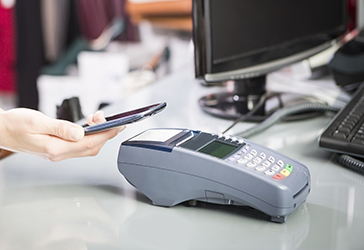
Student loan debt can feel crippling, especially if you are a recent graduate who is not yet earning much money. Your loan payments could hold you back from being able to work toward many of your financial goals, including buying a house or saving for retirement. The good news is that some borrowers will not have to repay the full amount of their student loans. The federal government offers several student loan forgiveness programs that cancel the remainder of a borrower's federal student loans after the borrower makes a specified number of payments.
Available student loan forgiveness programs
- Public Service Loan Forgiveness. This program is available to borrowers who work full time for ten years in a public service job while making payments on their student loans. Public service jobs are any government employment, whether federal, state, or local, and all 501(c)(3) not-for-profit organizations. The student loans must be federal Direct Loans, which can include other federal loan types consolidated into Direct Loans. All payments must have been made on or after October 1, 2007.
- Teacher Loan Forgiveness. Full-time teachers who work for five consecutive years in a school serving low-income families may qualify for between $5,000 and $17,500 of loan forgiveness on Direct Loans and Stafford Loans. Also, some teachers may be eligible to have a portion of their Federal Perkins Loans canceled after each of their first five years of teaching.
- Income-Driven Repayment Forgiveness. Borrowers who repay their loans under an income-driven repayment plan are eligible to have their remaining balance canceled after making either 20 or 25 years of payments. The years required depend on the repayment plan and the date when the borrower took out the first federal student loan.
Tips for obtaining loan forgiveness
- Know the details and paperwork requirements of the program you are using and stay on top of them. For example, you have the option of submitting an Employment Certification for Public Service Loan Forgiveness form each year, or every time you change jobs. This makes it easier to track your eligibility and progress toward public service loan forgiveness. It would be unfortunate to think you were about to have your balance forgiven, only to find that you had been misunderstanding an element of the program all along.
- Choose the lowest possible monthly payment if you are aiming for public service loan forgiveness or income-driven repayment forgiveness. You have several repayment plans available to you, and the one with the lowest monthly payments will allow you to keep the most money in your pockets during your repayment term. If your entire remaining balance will be forgiven, it is financially advantageous for you if that remaining balance was a large one.
- Understand the tax implications and plan for them. In some cases, the amount of the forgiven student loan balance may be counted as taxable income for the year in which loan forgiveness occurs. If this is the case, you will need to save money to be able to pay the tax bill when it is time to file for that year.
- Loan Forgiveness is an all-or-nothing event, so if you would like to use it, aim for a specific type of loan forgiveness and stick to that track until you have met the requirements. For example, if you are a teacher and plan to receive teacher loan forgiveness, make sure you work five consecutive years, rather than deciding to take a break after your fourth year and having to start all over again if you decide to return to teaching after that break.
Copyright





